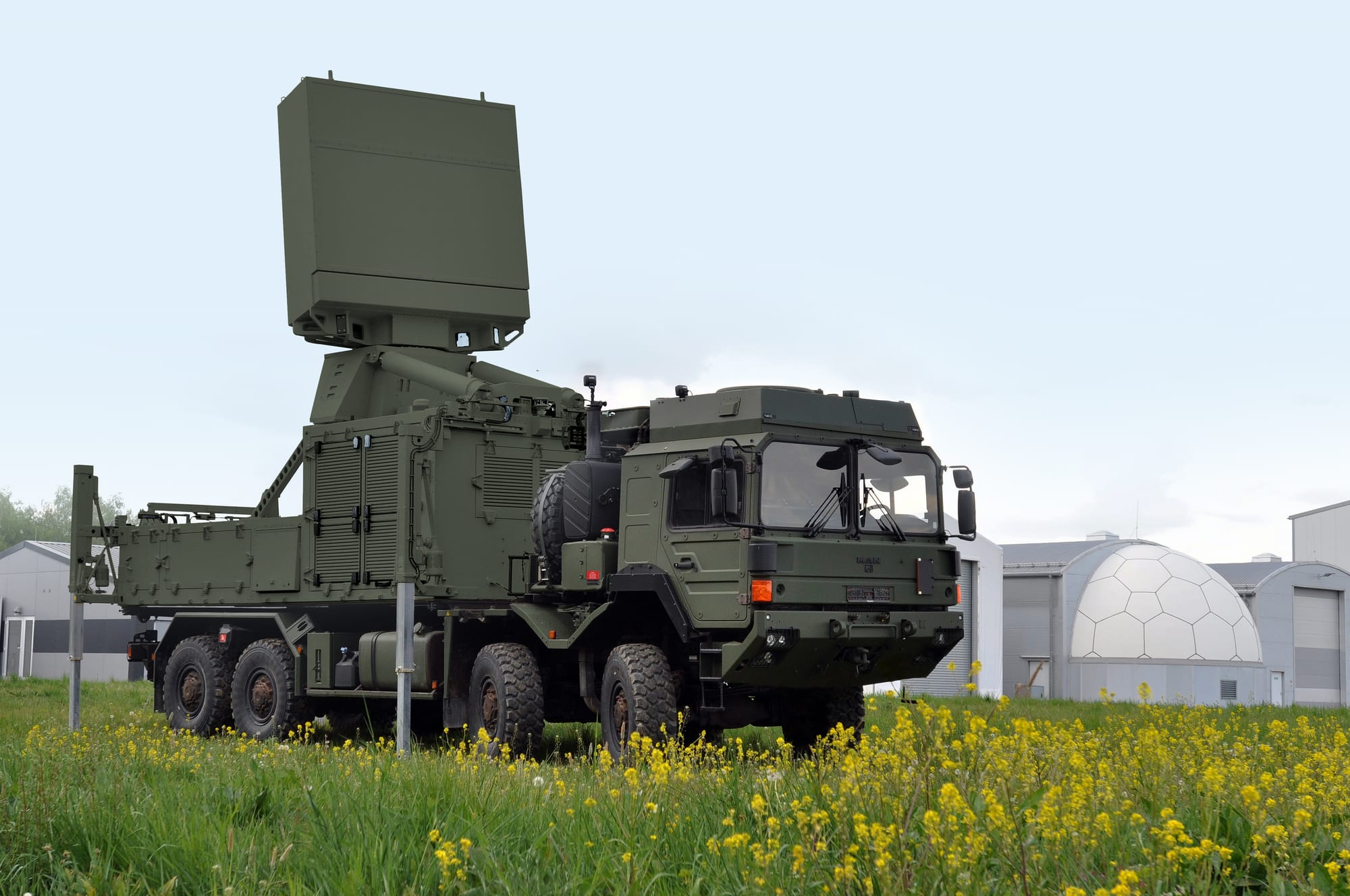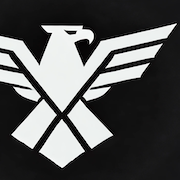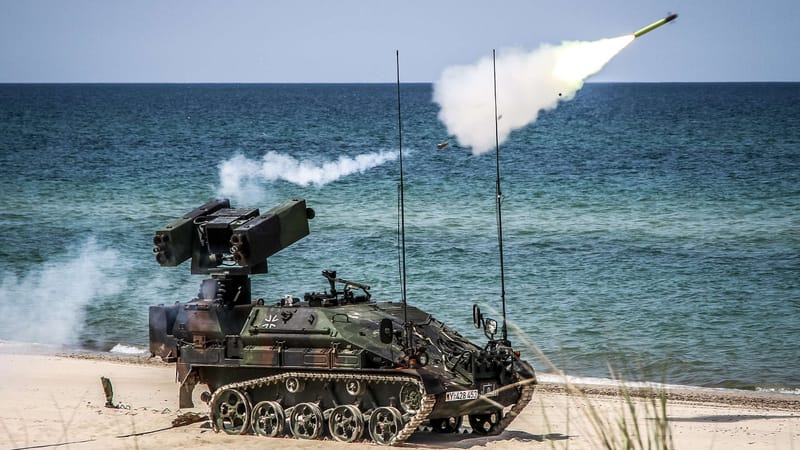Großwald Systems: Introduction to Radar Systems
The Foundations of Modern Sensing and Airspace Dominance
Introduction — The Architecture of Visibility
Modern warfare begins with what can be seen — and radar defines what is seen.
From the coastal towers of Britain’s Chain Home network to Germany’s digital TRML-4D, radar remains the invisible scaffolding of every air-defense and command system.
Europe is once again rebuilding this foundation. Drone saturation, hypersonic flight, and pervasive electronic warfare have turned the electromagnetic spectrum into a battlespace of its own.
Radar sits at the heart of this shift: it decides who detects first, who tracks continuously, and who controls the engagement loop when the air becomes opaque.
This introduction outlines the principles and evolution of radar as a military instrument — not as abstract physics, but as a practical enabler of power projection and defense sovereignty.
Drawing on MIT Lincoln Laboratory’s radar curriculum and M.I. Skolnik’s Introduction to Radar Systems, this series establishes the groundwork for Großwald’s ongoing analysis of Europe’s sensor renaissance.
1. Why Radar Matters
Radar emerged to solve a universal problem in warfare: the inability to see reliably through darkness, distance, and deception.
Unlike optical or infrared sensors, radar provides active awareness — emitting energy, measuring its return, and inferring the shape and motion of what lies beyond visual reach.
It is:
- All-weather and day/night capable
- Effective across long ranges
- Resilient to many countermeasures
- Crucial for 3D positioning and target identification
Across domains it underpins nearly every mission set:
- Air defense – early warning and engagement coordination (IRIS-T SLM, NASAMS)
- Ground surveillance – moving-target detection and mapping (SAR on Global Hawk)
- Fire control – precision tracking for guided munitions (APG-series radars)
- Missile guidance – active seekers for terminal homing
Radar, in short, is not one technology but the connective tissue linking sensors, networks, and effectors across modern command architectures.
2. The Basics — How Radar Sees
Core Radar Concepts
At its simplest, radar transmits a pulse of electromagnetic energy and listens for echoes. From that echo, it determines:
- Range (distance to target)
- Azimuth/Elevation (angle)
- Velocity (via Doppler shift)
- Size/Reflectivity (radar cross-section)
Fundamental Equation (Simplified)
The received signal power is governed by the Radar Range Equation, showing dependence on transmitted power, antenna gains, target size (RCS), and range:
The standard radar range equation (simplified, monostatic, no integration) is:
Pr = (Pt × G² × λ² × σ) / ((4π)³ × R⁴ × L)
Where:
- Pr = received power
- Pt = transmitted power
- G = antenna gain (assumed same for Tx/Rx in monostatic)
- λ = wavelength
- σ = radar cross-section
- R = range to target
- L = system losses
The proportional form equals:
Pr ∝ Pt × Gt × Gr × λ² × σ / R⁴
With Gt = Gr = G for monostatic.
It quantifies the simple truth behind every radar: detection power falls with the fourth power of distance.
All later innovations — from pulse compression to digital beamforming — are refinements of how that loss is managed.
3. A Short History of Military Radar
1936–45 — Chain Home and the Birth of Early Warning
Britain’s Chain Home network was the first operational radar system — a line of coastal towers emitting meter-wave pulses that gave the RAF minutes of warning before Luftwaffe raids. It turned air defense from guesswork into coordination, introducing the logic of networked command and control.
1960s — Doppler and Pulse Compression: The Age of Discrimination
Post-war advances shifted radar from detection to discrimination. Doppler processing isolated moving aircraft from ground clutter; pulse compression extended range without losing resolution. The result: coherent radars capable of tracking multiple fast targets — precursors to today’s fire-control and imaging systems.
1990s — The AESA Revolution
Active Electronically Scanned Arrays (AESA) replaced rotating dishes with thousands of solid-state modules, steering beams electronically within microseconds. Radar became agile, jam-resistant, and software-defined — a decisive leap in situational awareness and survivability.
2020s — GaN and Software-Defined Radar: Europe’s Return
With Gallium Nitride (GaN) semiconductors and digital beamforming, Europe has re-entered the high-end radar race. HENSOLDT, Leonardo, and Thales lead this comeback with scalable systems like TRML-4D, Kronos, and Ground Master 400 Alpha, restoring technological sovereignty across NATO’s sensor networks.
After decades of U.S. and Israeli dominance, European firms like HENSOLDT, Leonardo, and Thales are re-entering the high-end radar race, driven by sovereignty imperatives.
4. Radar Types by Function
Radar systems are designed around the domain they serve — each optimized for a distinct combination of range, resolution, and mobility.
From fixed early-warning networks to space-based sensors, the architecture of radar reflects the structure of modern defense itself.
| Domain | Use Cases | Example Systems |
|---|---|---|
| Ground-based | Surveillance, Fire Control | Saab Giraffe 4A, EL/M-2080 Green Pine, HENSOLDT TRML-4D |
| Airborne | AEW&C, Strike, Navigation | Saab Erieye ER, AN/APG-81 (F-35), Leonardo Vixen 1000E |
| Naval | Surface Search, CIWS Guidance | Thales Sea Fire, Raytheon SPY-6, Saab Sea Giraffe 4A |
| Space | Missile Warning, Debris Tracking | SBIRS Constellation, Lockheed Space Fence, Fraunhofer TIRA |
| Civil | Air-Traffic Control, Weather Monitoring | ASR-11, NEXRAD, EUMETSAT Meteosat Third Gen |
Each class represents a trade-off:
ground radars favor power and aperture; airborne sensors prize mobility and update rate; naval arrays balance horizon curvature with sea-clutter rejection; and space-based systems extend radar’s reach beyond atmosphere and sovereignty alike.
Together they form a continuous radar lattice — from terrain to orbit — that underpins NATO’s integrated air and missile defense architecture.
5. Key Radar Parameters
Every radar’s performance can be traced to a handful of physical parameters.
These define how far, how precisely, and how reliably a system can detect, track, and classify a target.
Understanding them is essential to comparing systems across domains — whether a fixed early-warning radar or an airborne fire-control array.
| Term | Meaning |
|---|---|
| Wavelength (λ) | Distance between electromagnetic wave peaks; determines propagation, resolution, and sensitivity to weather. |
| Frequency (f) | Oscillations per second (f = c / λ); higher frequencies enable finer resolution but shorter range. |
| Pulse Repetition Frequency (PRF) | Number of pulses transmitted per second; sets update rate and velocity-measurement fidelity. |
| Duty Cycle | Ratio of pulse duration to total time; balances peak power with thermal and hardware limits. |
| Radar Cross Section (σ) | Effective reflective area of a target, expressed in m² or dBsm; the smaller the σ, the harder the detection. |
| Antenna Gain (G) | Directional amplification of transmitted or received energy; higher gain focuses power and increases range. |
In combination, these variables govern a radar’s range equation — the physics that decides who sees first.
Engineers trade between them continuously: frequency for penetration, pulse rate for precision, gain for coverage.
Modern AESA systems, with digital beam steering and adaptive waveforms, now adjust these parameters in real time — compressing what once required manual tuning into algorithmic decision speed.
6. Pulse and Doppler
Radar’s ability to measure both distance and motion rests on two intertwined principles: pulsing and Doppler shift.
Pulsed Radar
A pulsed radar emits short bursts of electromagnetic energy and measures the time until the echo returns.
Each pulse defines a snapshot of range — Range = (c × time delay) / 2
where c is the speed of light and the division by two accounts for the round trip.
The balance between peak and average power determines detection range and thermal limits: high peak power extends reach but demands cooling and limits pulse rate.
Pulsed systems form the backbone of early-warning and tracking radars, from fixed ground networks to shipborne arrays.
Doppler Radar
The Doppler effect measures the change in frequency caused by a moving target — an approaching aircraft compresses the wavelength, a receding one stretches it.
By analyzing this shift, radar can separate moving objects from stationary background reflections, a capability known as Moving Target Indication (MTI).
Modern pulse-Doppler radars fuse both methods: pulsing for range, Doppler for velocity.
This dual processing enables continuous target tracking in cluttered environments — the core logic behind every modern fighter, missile seeker, and air-defense sensor.
7. Frequency Bands (IEEE Standard)
Radar frequency determines what a system can see — its range, resolution, and atmospheric resilience.
Lower bands travel farther and penetrate weather; higher bands offer finer detail but shorter reach.
Each serves a specific operational niche within the electromagnetic spectrum.
| Band | Range (GHz) | Primary Use |
|---|---|---|
| L-Band | 1 – 2 | Long-range surveillance, early warning (e.g. ECRS Mk 1 EW mode) |
| S-Band | 2 – 4 | Medium-range air and sea search (e.g. AN/SPY-1, SMART-S Mk 2) |
| C-Band | 4 – 8 | Weather, air-defense, and approach control (e.g. HENSOLDT TRML-4D) |
| X-Band | 8 – 12 | Fire-control and imaging radar (e.g. AN/APG-81 on F-35, Sea Fire) |
| Ku / Ka / W | 12 – 100 + | Missile seekers, high-resolution SAR and experimental micro-radar |
In practice, most modern systems blend multiple bands or operate in multifunction modes, fusing data from separate sensors to balance reach and fidelity.
The shift toward GaN-based transmitters and software-defined waveforms now allows radars to reconfigure across bands in real time — giving NATO forces adaptive control over spectrum, resolution, and stealth detection within a single architectu
8. Modern Challenges
As the electromagnetic spectrum grows crowded and contested, radar must now contend with both physics and adversaries.
Modern threats no longer rely on invisibility alone but on deception — hiding within clutter, jamming the receiver, or flooding bandwidth with false returns.
Key Challenges
- Low-Observable Targets: Stealth shaping and radar-absorbent materials reduce radar cross-section by orders of magnitude, forcing reliance on multistatic, low-frequency, or passive detection.
- Electronic Warfare: Sophisticated jamming and decoys attempt to blind or confuse sensors, demanding agile frequency hopping and signal authentication.
- Clutter-Rich Environments: Urban terrain, sea states, and drone swarms generate reflections that obscure valid tracks.
- Bandwidth & Processing Limits: Modern radars collect terabytes per second; real-time filtering and classification strain even advanced digital back-ends.
Evolving Solutions
- Pulse Compression – Expands range resolution without raising peak power, sharpening echoes within noise.
- Adaptive Beamforming – Dynamically steers and shapes beams to nullify jammers and isolate moving targets.
- Coherent Integration – Accumulates multiple returns to extract faint signals from clutter.
- AI-Based Signal Processing – Applies machine learning for pattern recognition, anomaly detection, and adaptive waveform control.
These advances mark the transition from hardware-limited to software-defined radar.
In Europe’s defense architecture, this evolution defines not just who sees first — but who continues to see when the spectrum turns hostile.
9. What's Next in the Series
Next we move from overview to practical priorities — short, focused deep dives that inform procurement choices and operational trade-offs rather than exhaustive textbooks. Each entry will be deliberately applied: enough technical depth to be useful to program managers and analysts, and enough industrial detail to show who matters in Europe’s rebuild.
Upcoming entries:
- Radar Equation & Practical Limits — what the equation actually means for range and deployment choices (realistic tradeoffs, not math class).
- AESA + GaN: Capability & Supply Chains — why GaN matters, what AESA enables, and which suppliers shape Europe’s options.
- Detection Against Stealth & Swarms — realistic counter-stealth measures (multistatic, low-freq mixes, sensor fusion) and how to cope with massed small UAS.
- Operational Integration — tracking, fire-control loops, and the systems engineering problems that decide whether sensors turn into effectors or stovepipes.
References
- Skolnik, M.I. Introduction to Radar Systems. McGraw-Hill, 3rd ed.
- Buderi, R. The Invention That Changed the World
- MIT Lincoln Laboratory. Radar Introduction Course (2002)

Radar Systems — Frequently Asked Questions
What does radar stand for?
Radar stands for Radio Detection and Ranging. It measures distance, direction, and motion by transmitting radio waves and analyzing their echoes.
How does radar differ from optical or infrared sensors?
Radar is an active sensor: it emits its own energy and operates in all weather and lighting conditions. Optical and IR systems are passive, relying on ambient or emitted light and are limited by fog, clouds, and darkness.
Why is radar critical for modern air defense?
Radar provides early warning, target tracking, and fire-control data. Without it, systems like IRIS-T SLM, Patriot, or NASAMS could not detect or engage threats beyond visual range.
What are AESA and GaN technologies?
AESA (Active Electronically Scanned Array) radars use thousands of solid-state transmit/receive modules to steer beams electronically.
GaN (Gallium Nitride) semiconductors increase output power and thermal efficiency, making AESA systems lighter, stronger, and more efficient.
What frequency bands do military radars use?
Military radars typically operate from L-band (1–2 GHz) for long-range surveillance up to X-band and Ka-band (8–40 GHz) for precision tracking and missile guidance. Modern systems can hop or fuse across bands dynamically.
How do modern radars detect stealth aircraft?
They combine low-frequency or multistatic radars, passive receivers, and AI-based signal processing to spot faint or irregular reflections that stealth shaping cannot fully mask.
Who leads Europe’s radar industry today?
Europe’s key radar houses are HENSOLDT (Germany), Thales (France), and Leonardo (Italy). Each develops scalable AESA families — TRML-4D, Ground Master 400 Alpha, and Kronos HPC — that support NATO’s integrated air-defense network.






